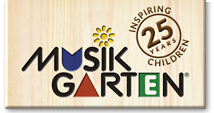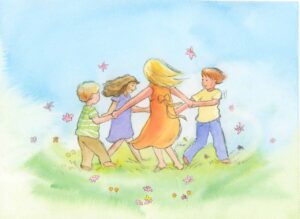Teachers understand that classroom management is extremely important to providing the best environment for education. Whether virtual or in-person, making sure that each participant has opportunity to learn is one of the biggest challenges for teachers, especially in the children’s classroom. Not only does classroom management make teaching more efficient and effective, it is essential to entice and motivate student learning.
Classroom Management in Children’s Music Classes
For educators that are teaching in an early childhood music studio, the challenges of classroom management can be unique. Because children’s music instruction often includes physical activity in a group setting, it creates a fertile environment for disruptive behavior. Asking many children to verbalize or speak up in class is a particular challenge for any teacher, but asking a child to sing out loud in front of others can be even more challenging. Below are some classroom management tips and tricks that have been shared by children’s music teachers with decades of experience.
- Set Expectations with both parents and students from the very beginning – Have an orientation for parents, explaining how the process will work, classroom policies, and what will be expected from both parent and child.
- Remove any distractions from your teaching space – Only have the things that students will be using in the lesson in plain sight. Before each class, plan ahead on only what will be needed for that class.
- Strategically position yourself in your classroom space – If this is a class with new students and parents, it may take some observation over a few class periods. If there are very active children, pairs, or groups that cut-up or pester each other, or even parents that tend to chat too much, position yourself in a way where you can intervene in a constructive and non-threatening way, such as positive reinforcement and body language.
- Constantly observe your students – If children begin to become restless, be ready to engage in a way that allows them to be active and “get the wiggles out.”
Parents Role in Children’s Music Classroom Management
When setting expectations with caregivers at the beginning of a children’s music class, it is very important that they understand their role in helping to manage the classroom. This mainly regards management of their own child, whether through correction or modeling. The following are examples of times when a teacher should expect the parent to react:
- The child is doing something dangerous to themselves or someone else in the classroom.
- The child is doing something disruptive.
- The child is carrying on at a level that is distracting or causing distress to others.
There are many things that can cause this kind of behavior in children, such as being tired and hungry, wanting attention, nervousness, or a child that has been pre-diagnosed with special needs. Some tips for teachers to deal with these behaviors, as well as helping parents to do so, are:
- Remind parents that children do not understand contractions such as “don’t” or we “shouldn’t”. Direct language such as “do not” or “no (corrected action)” work better with children.
- Remove the child from the classroom situation for a short period until they have reset.
- Understand that sometimes it takes several classes for a child to get “into their comfort zone” when in a new environment such as a music class.
- For children who do not want to participate, give them the choice of either doing so or sitting in a “quiet corner.” Empowering the child to make the decision often has positive results by them re-engaging.
- For classes with older children when the parent is not always present, address ongoing behavior promptly and privately with the parent after class.
- Manage transitions wisely in order to make them smooth for everyone.
These are just some of the techniques that teachers of early childhood music can use to manage their classrooms, parents, and students. Good educators understand that setting expectations early is pivotal in getting everyone on board for a fun and conducive learning environment.






